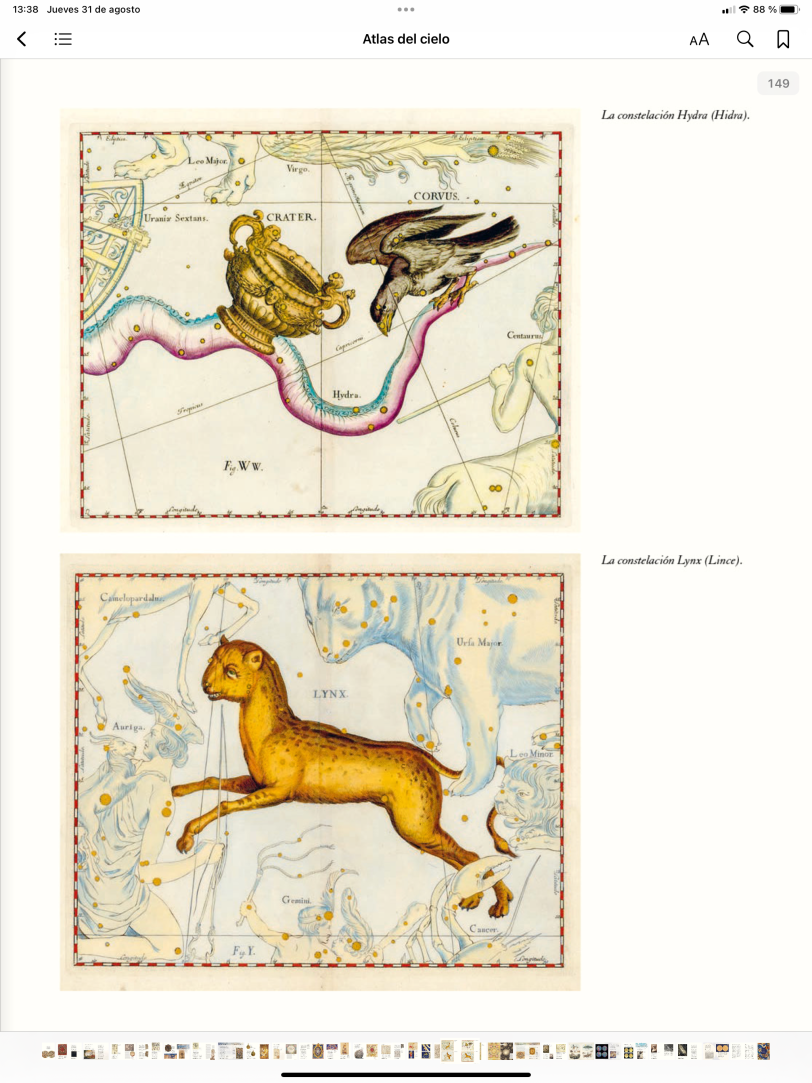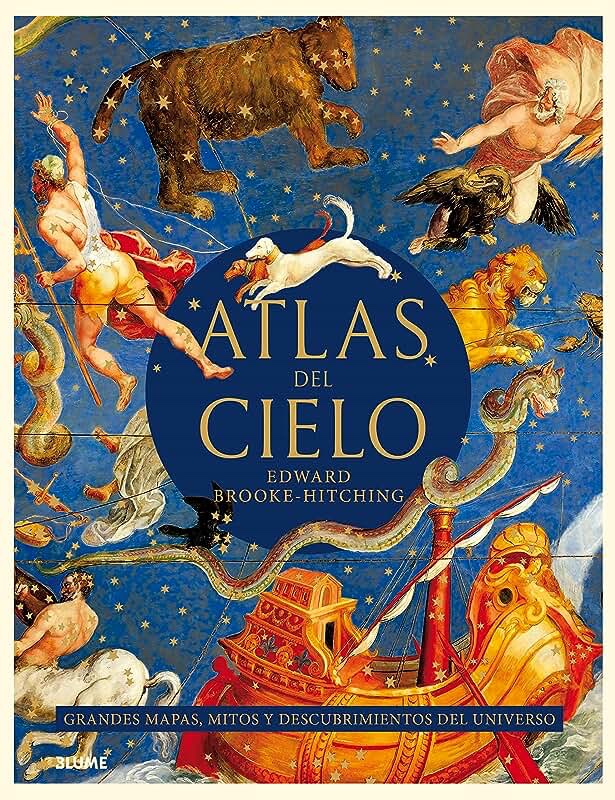
Este compendio es un verdadero atlas de nuestros cielos. Recopila la extraordinaria crónica de cómo hemos ido descubriendo el cosmos. Primero a través de nuestra imaginación y después gracias a la ciencia. Mapas estelares, constelaciones o signos zodiacales están recogidos en esta obra. Les acompañan increíbles historias de descubrimiento en las que vamos a comprobar cómo el ser humano siempre se ha sentido atraído y fascinado por descubrir qué hay ahí arriba, en nuestro firmamento.
El libro es una forma muy amena pero, sobre todo, muy visual de ver nuestras estrellas. Cada civilización las medía y se acercaba a ellas de una forma diferente. Empezamos por las primeras sociedades. Sin apenas medios, hacían bocetos de lo que ellos veían reflejado en el cielo. Poco a poco, a medida que nuestra sociedad se fue modernizando y avanzando, nuestras herramientas fueron mejorando hasta poder hacer un mapa mucho más fidedigno de lo que hay fuera de nuestro mundo. Todas esas imágenes de planetas, constelaciones o galaxias están en esta obra. Una manera certera de aproximarnos a una de las mayores incógnitas que persiguen al ser humano: ¿Qué hay ahí fuera?.
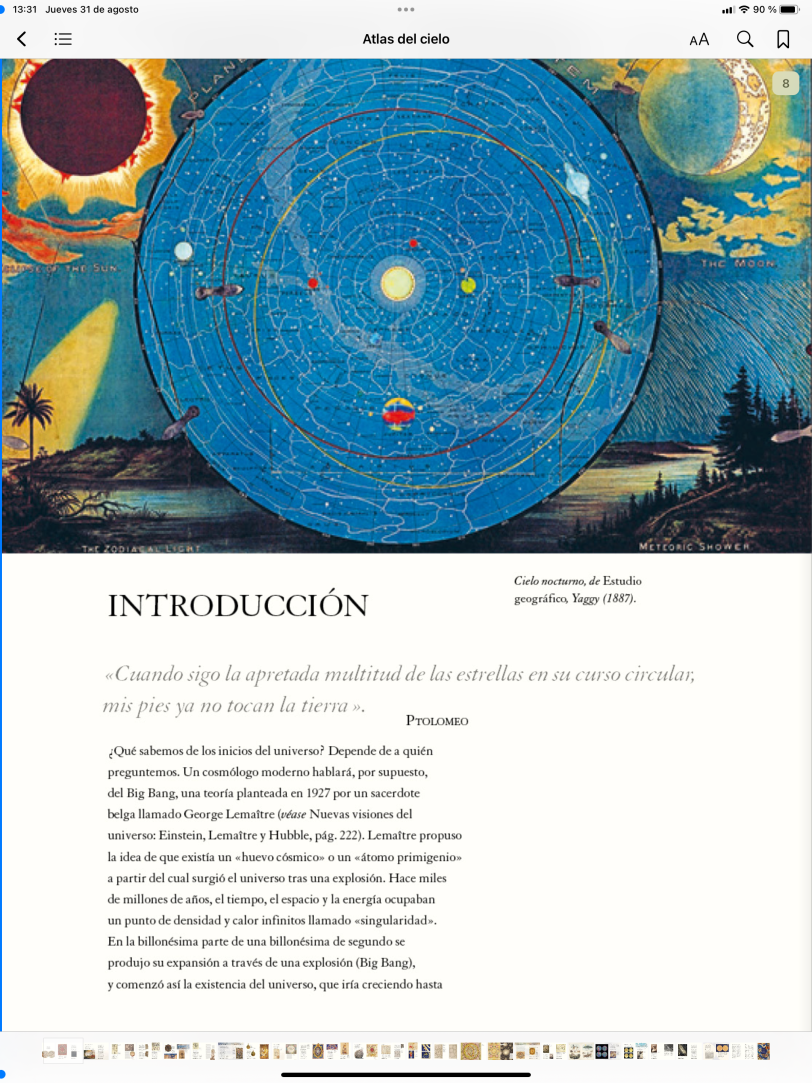
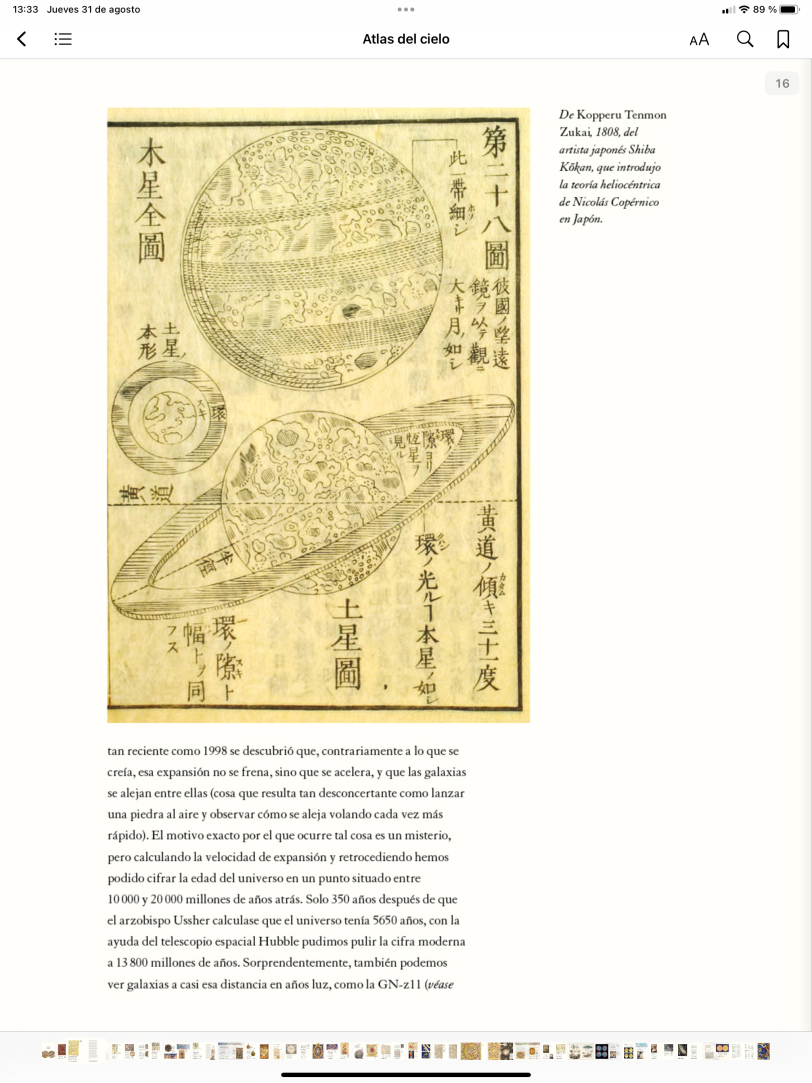
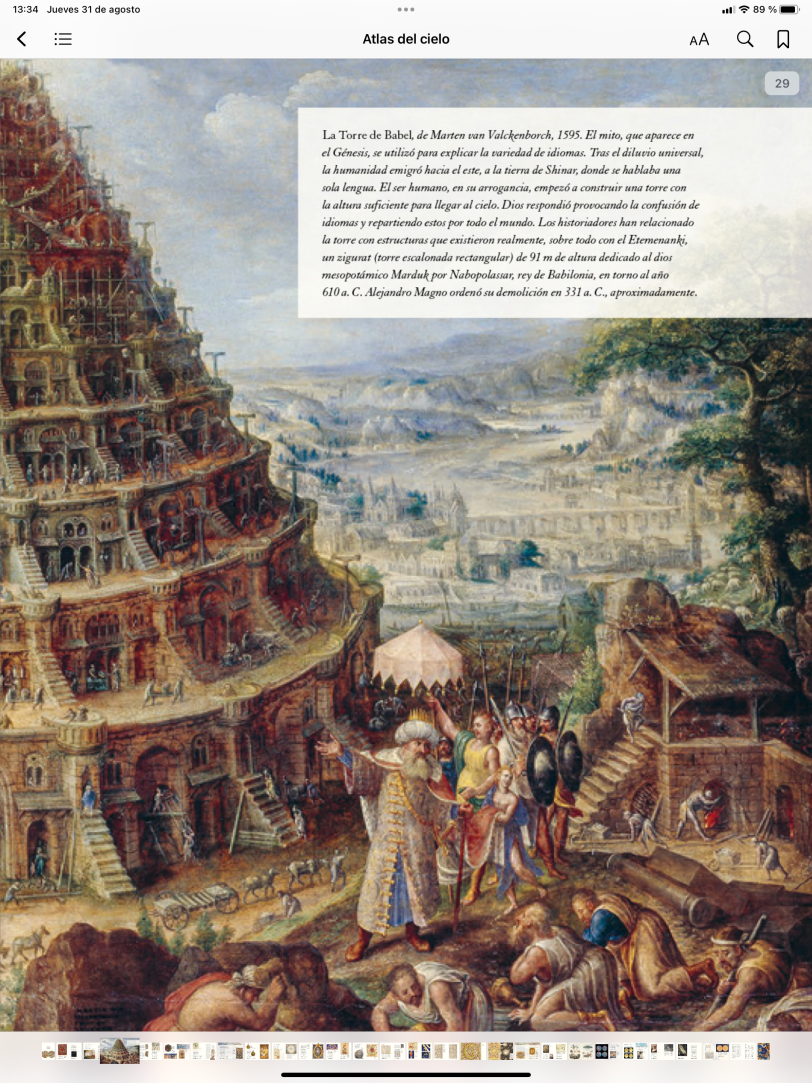
Uno de los mejores libros ilustrados que puedes tener sin duda. Empezando por una edición súper cuidada de tapa dura, siguiendo por una calidad de imagen muy alta y terminando con unos contenidos súper completos y amplios en cuanto a religiones se refiere, es un libro excelente.
Una lectura para disfrutar poco a poco que en mi caso he llenado de post-its de la cantidad de datos que he aprendido (y me han sorprendido) y de las preciosas imágenes que ilustran las descripciones.
Edward deja claro que su intención es crear una historia visual del cielo celeste, correlacionando todas las facetas y creencias a lo largo de la historia en un único continuo histórico. Los diversos períodos, culturas y creencias sobre la creación y sus intentos de mapear el cielo y revelar sus secretos en constante desarrollo son un pilar de la publicación. Tenía varios subperíodos en orden, pero dentro de ellos encontré que el libro estaba bastante confuso en lo que respecta a la astrología antigua y medieval en particular; sin embargo, el libro adquirió más uniformidad a medida que continuaba hacia períodos más modernos y se concentraba en la astronomía. Edward creía que la cartografía celeste ha sido enormemente infravalorada en parte debido a su larga asociación histórica con la astrología. Sin embargo, creo que, al igual que la astronomía, fue creada por la astrología y por eso el mundo debería estar agradecido. Insiste en la imaginación como la clave para el descubrimiento y, por supuesto, esto es indiscutible ya que la imaginación misma es creación, y todos somos uno dentro de esta creación divina del universo. Su comprensión de la astrología puede no ser su fuerte, ya que algunas referencias a la relación de Al Kindi y Abu Ma’shar parecían indicar que el uso de la astrología por parte de Abu Ma’shar creó tensión entre ellos. Pero no estoy seguro de esto. Alkindi era un astrólogo, así que esto me parece improbable. Su uso de las palabras astrólogo y astrónomo fue fluido e intercambiable en algunos períodos anteriores en los que claramente hablaba de astrólogos y en algunos casos eruditos. Sin embargo, esta es mi visión crítica como astrólogo y el libro no trata en su totalidad sobre astrología ni estaba destinado a ser el enfoque. Sin embargo, es un libro excelente de significado histórico para los astrólogos y está bien referenciado en sus capítulos con referencias de páginas que enlazan con otras partes correspondientes y notables del libro. Los mapas y las obras de arte tienen anotaciones maravillosamente referenciadas y son una mezcla heterogénea visual de piezas culturalmente significativas. No creo que de ninguna manera fuera demasiado escéptico hacia la astrología o degradante hacia ella de ninguna manera, sin embargo, partes del libro hacían referencia a ella como pseudociencia y otras con legitimidad cultural y literaria, en algunos casos hacían referencia a predicciones precisas de mapas particulares dentro del libro. En general, recomiendo encarecidamente este libro a los astrólogos, es una lectura fácil y ligera con casi la mitad de las 247 páginas repletas de mapas de las estrellas y obras de arte y la otra mitad con excelentes referencias culturales e históricas a la astrología que no gravitan simplemente hacia Occidente, un libro que disfruté mucho y recomiendo.
Este es el libro que estaba buscando cuando pensé que buscaba algo completamente diferente. La historia de este libro cubre sólo el intento de comprender el cosmos, pero cubre múltiples culturas que van desde la prehistoria hasta los tiempos modernos. Todo lo que puedas imaginar está incluido aquí, y probablemente algunas cosas que nunca hubieras imaginado. Por ejemplo, en la página 11, el título de la ilustración menciona una idea oscura sobre el origen de los anillos de Saturno que nunca habría considerado, y nunca podré volver a mirar a Saturno sin recordarlo.
Las ilustraciones son impresionantes y cubren todo, desde mapas dibujados a mano hasta ropa ceremonial con representaciones de constelaciones y la Vía Láctea, letras, ilustraciones y objetos como mojones sumerios, un elaborado astrolabio antiguo y un globo de Marte pintado a mano. Realmente hay demasiado aquí como para hacer justicia con una lista corta. No omita los subtítulos aquí, porque gran parte de este material no se menciona en el texto.
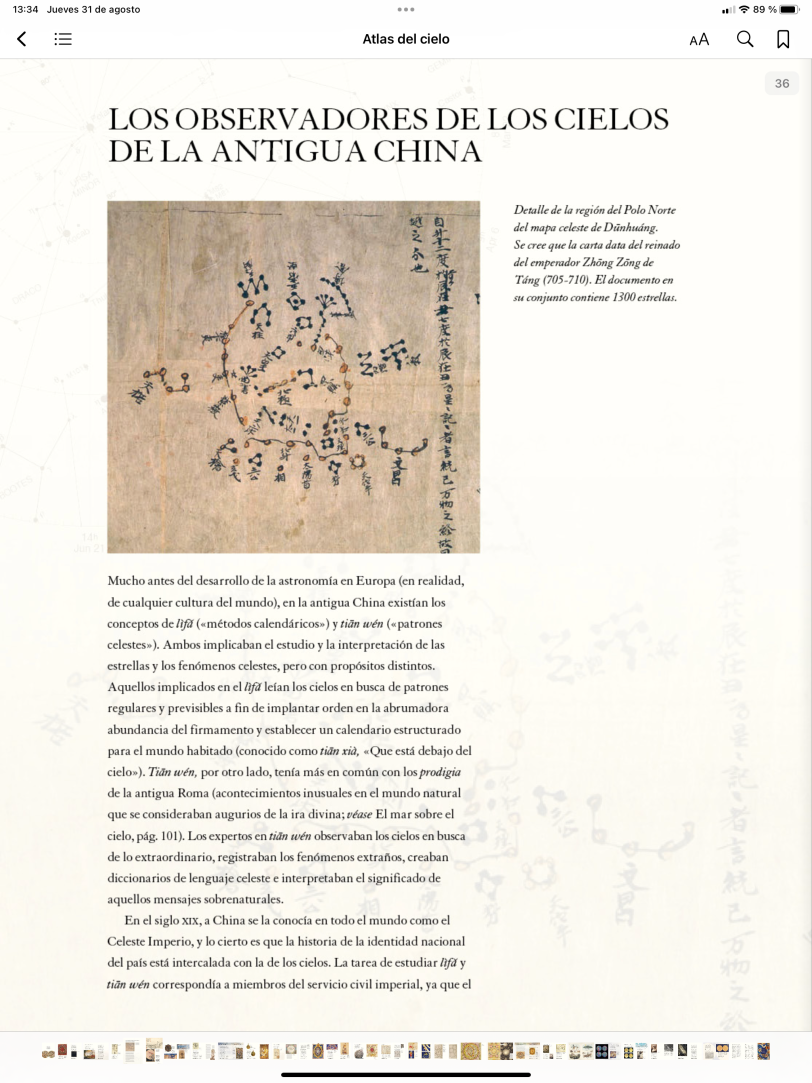
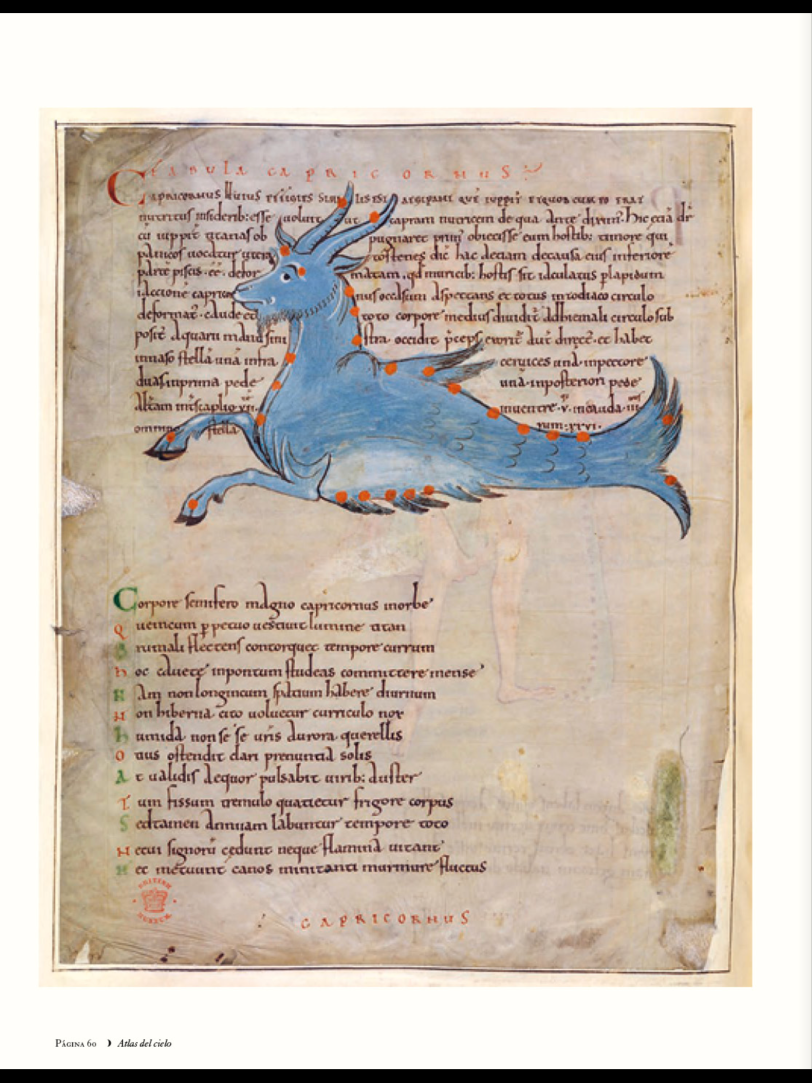
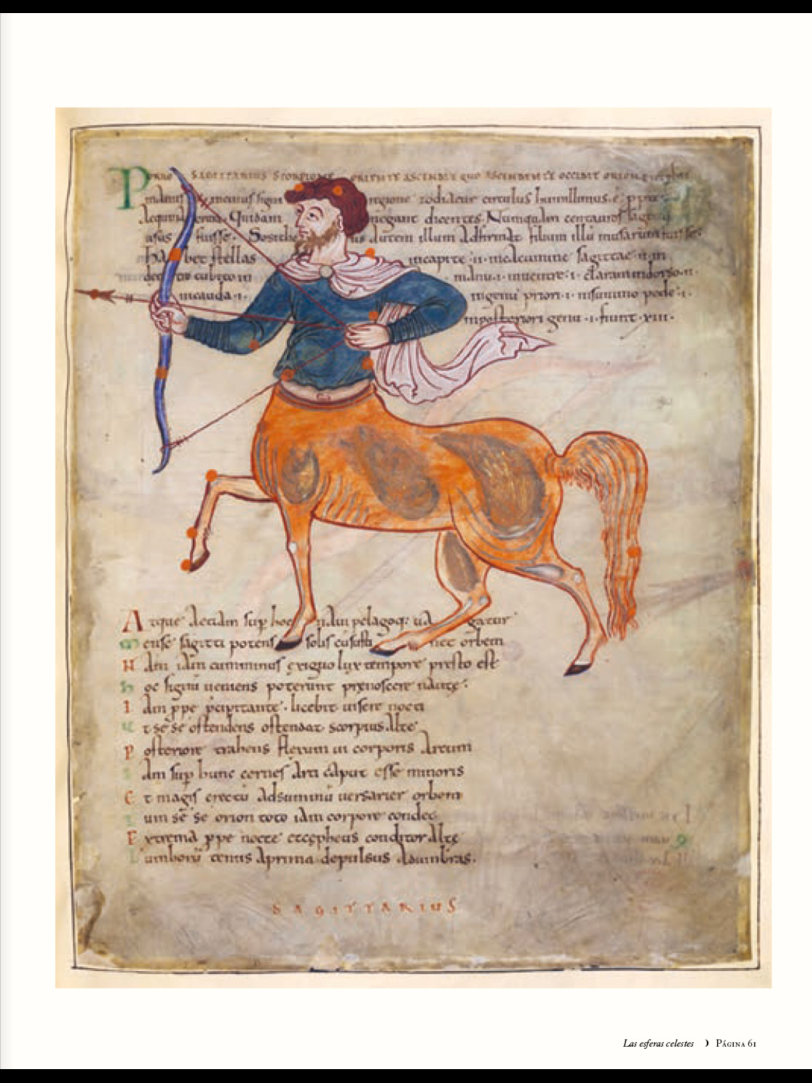
La primera sección del texto, El cielo antiguo, comienza con intentos prehistóricos de comprender el mundo sobre la Tierra, incluido lo que creemos que es el mapa estelar más antiguo existente en las cuevas de Lascaux en Francia. Cubre culturas de todo el mundo, incluidas Europa, Asia, América y el norte de África. En la segunda sección, El cielo medieval, la atención se centra principalmente en la astronomía islámica y europea, aunque cubre brevemente los desarrollos en Mesoamérica (inca, maya, azteca). La siguiente sección, el cielo científico, cubre material con el que la mayoría de las personas interesadas en la astronomía están familiarizadas: la Revolución Copérnica, Tycho Brahe, Kepler, Galileo, Newton. La última sección, The Modern Sky, intenta rastrear los desarrollos desde mediados del siglo XIX hasta los desarrollos recientes utilizando el Telescopio Espacial Hubble, InSight (que actualmente todavía explora Marte), la Sonda Solar Parker (que actualmente reduce su órbita para acercarse al Sol). ), New Horizons (que actualmente explora el cinturón de Kuiper) y el previsto telescopio espacial James Webb (lanzamiento retrasado de marzo a octubre de 2021).
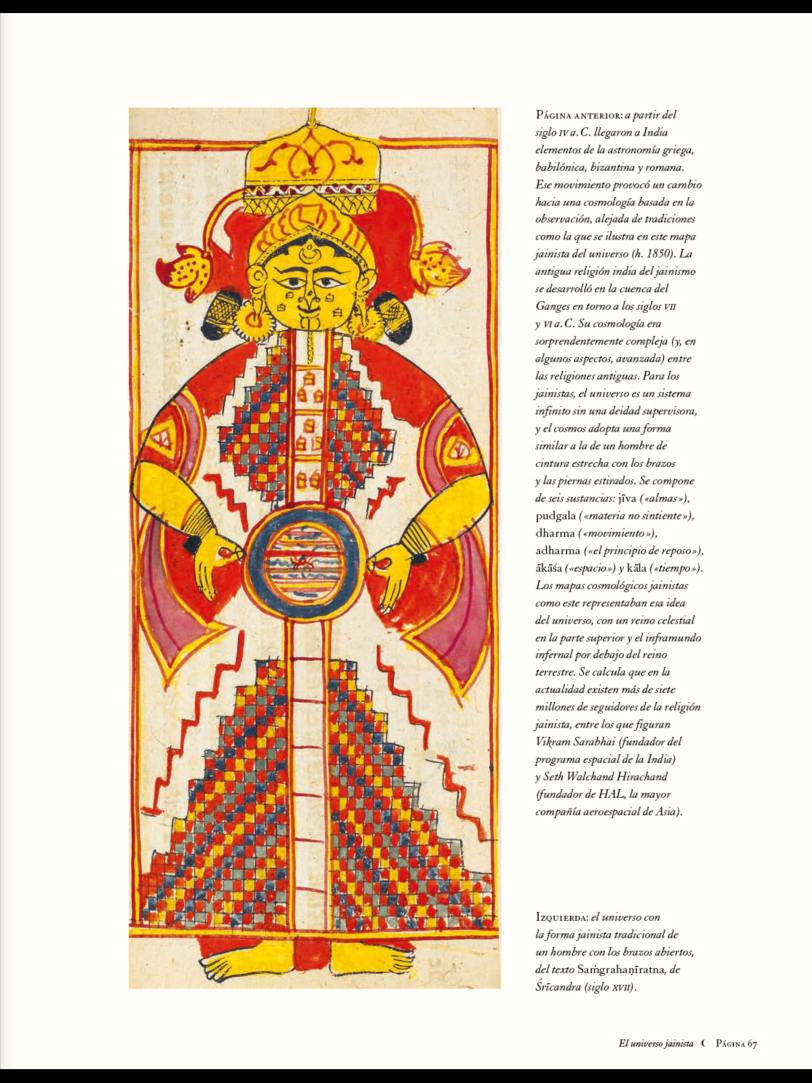
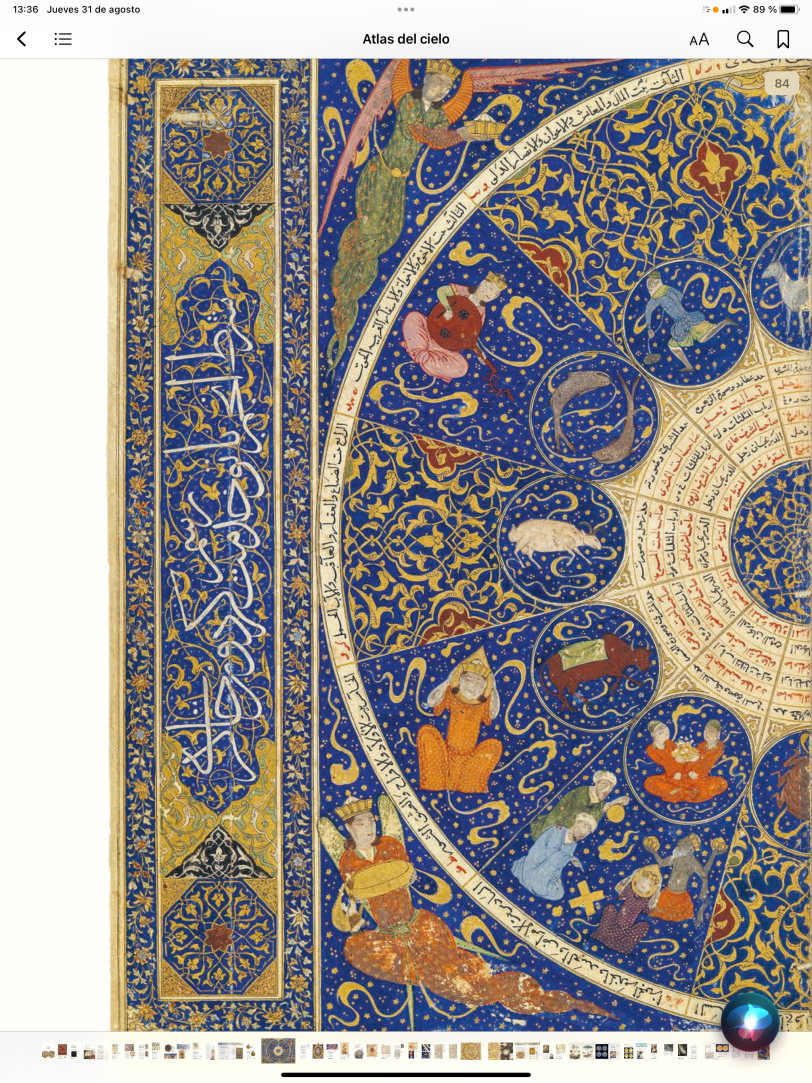
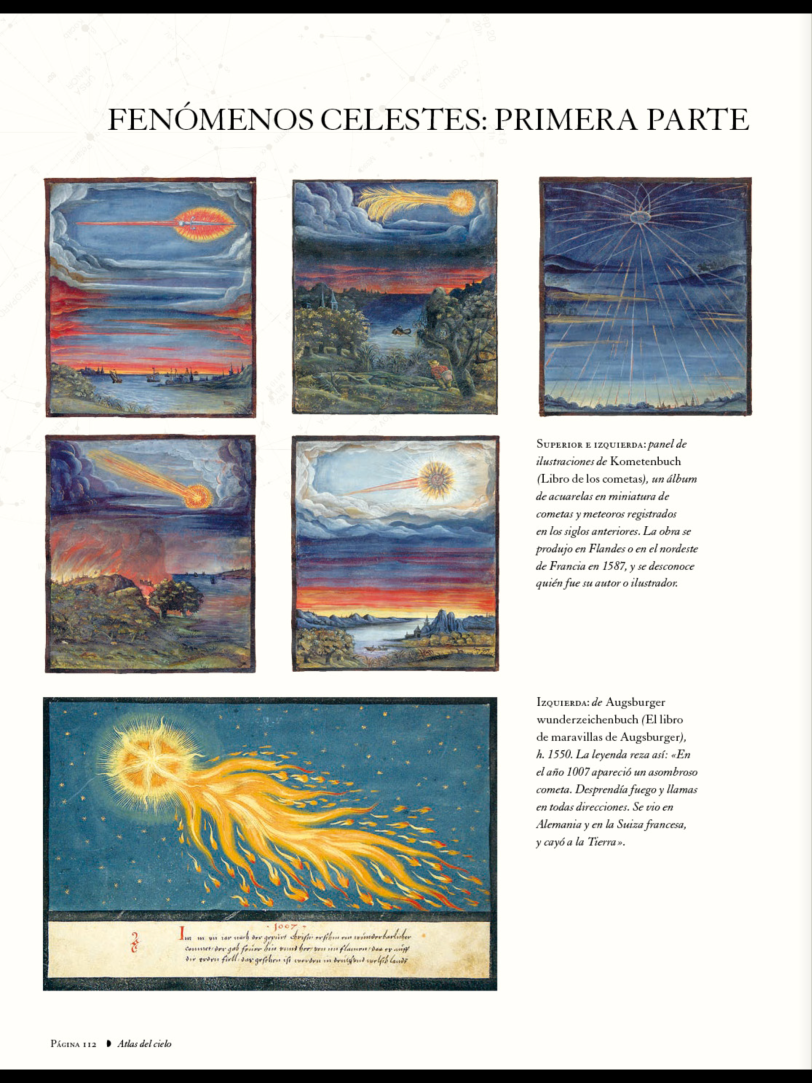
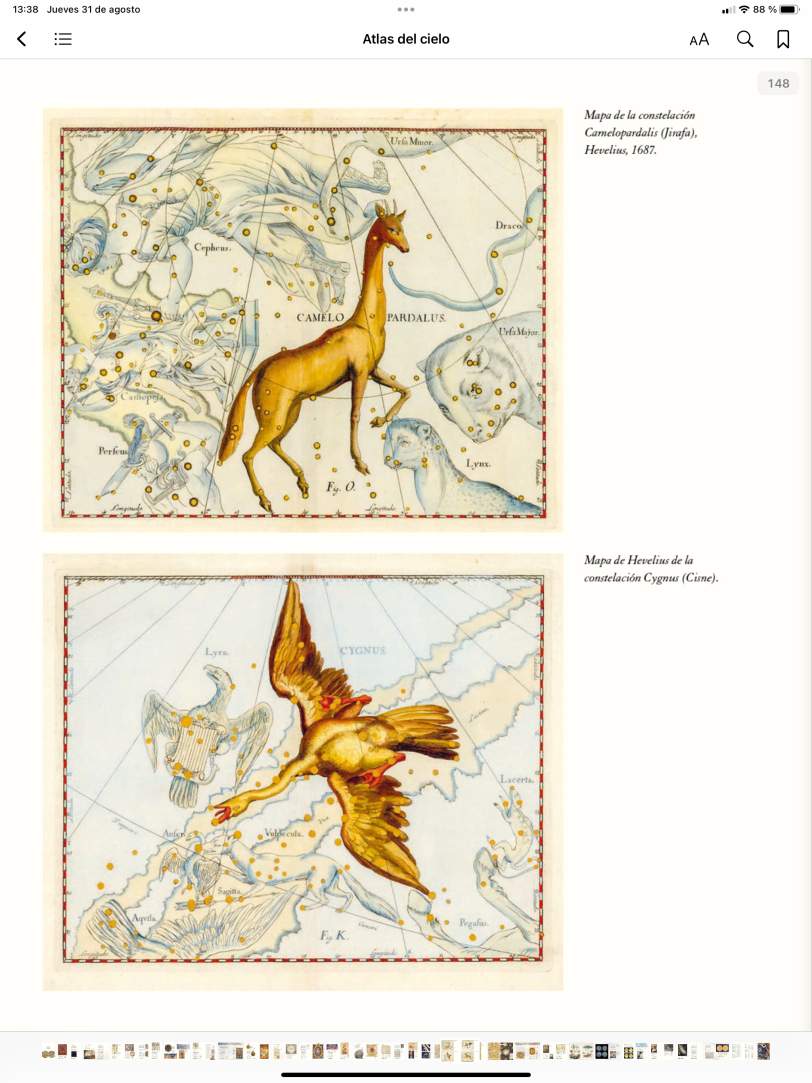
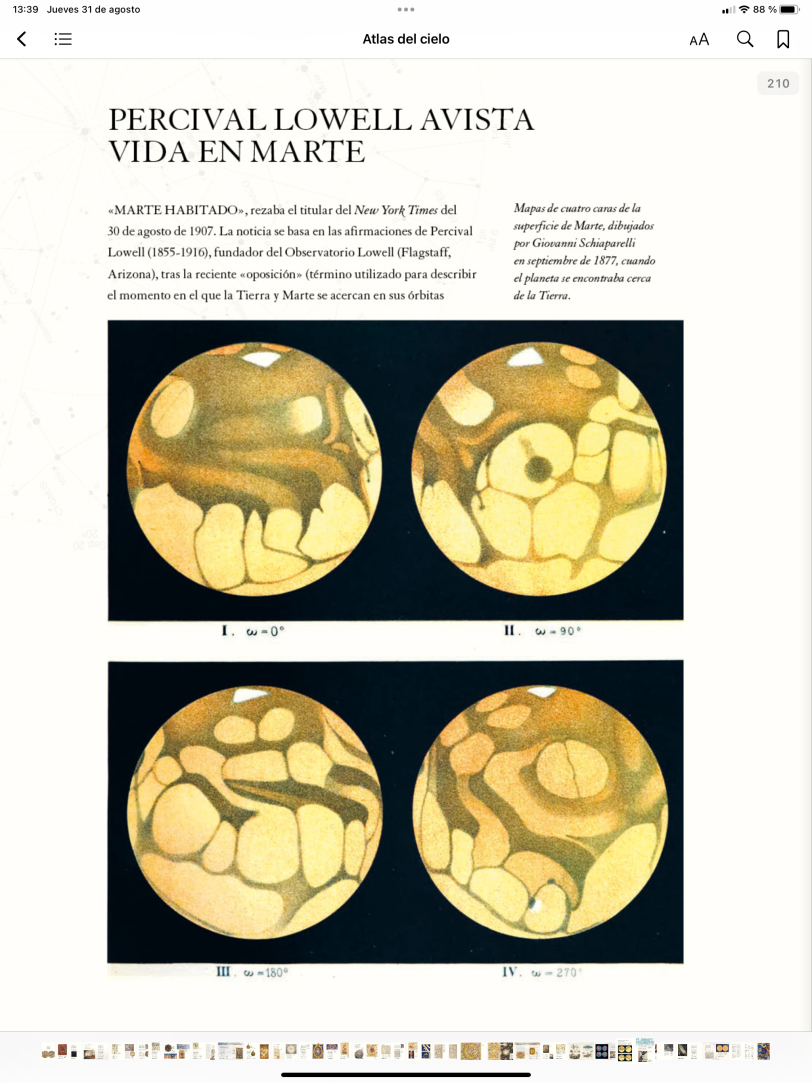
Recomiendo ampliamente la edición de tapa dura.
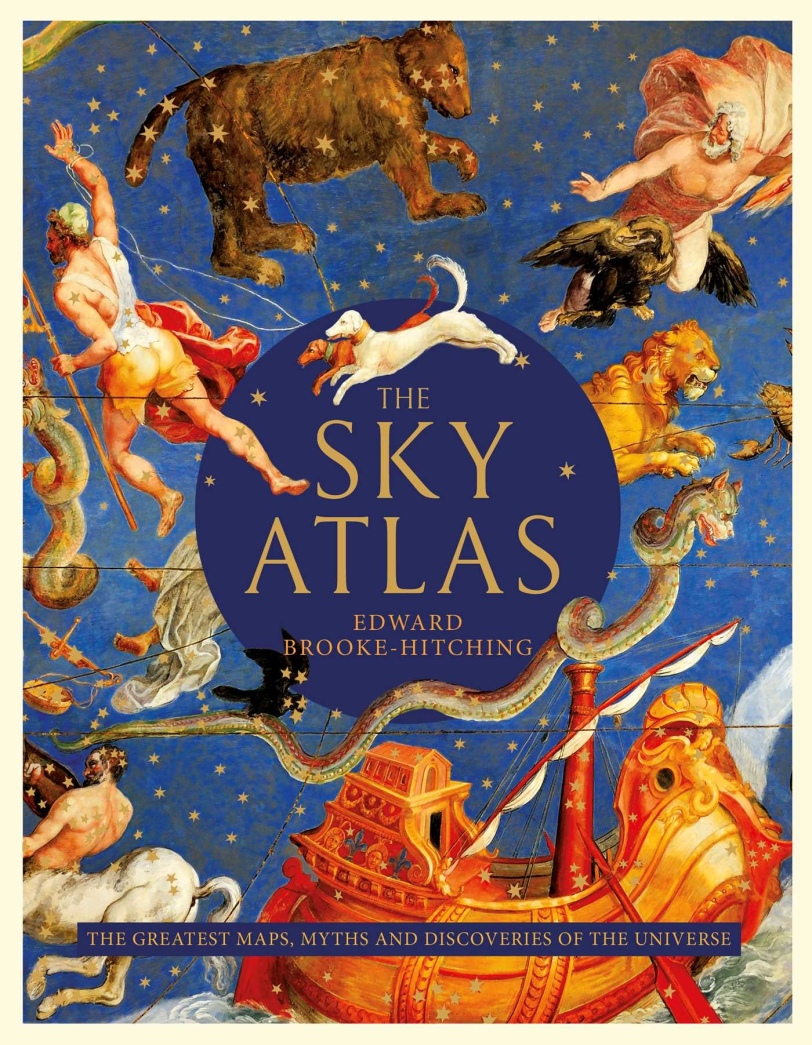
This compendium is a true atlas of our skies. It compiles the extraordinary chronicle of how we have discovered the cosmos. First through our imagination and then thanks to science. Star maps, constellations or zodiacal signs are collected in this work. They are accompanied by incredible stories of discovery in which we will see how human beings have always felt attracted and fascinated by discovering what is up there, in our sky.
The book is a very enjoyable but, above all, very visual way to see our stars. Each civilization measured them and approached them in a different way. We start with the first societies. With hardly any means, they made sketches of what they saw reflected in the sky. Little by little, as our society modernized and advanced, our tools improved until we were able to make a much more reliable map of what is outside our world. All those images of planets, constellations or galaxies are in this work. An accurate way to approach one of the biggest unknowns that haunt human beings: What is out there?
One of the best illustrated books you can have without a doubt. Starting with a super careful hardcover edition, continuing with a very high image quality and ending with super complete and extensive content in terms of religions, it is an excellent book.
A reading to enjoy little by little, which in my case I have filled with post-its about the amount of information I have learned (and they have surprised me) and the beautiful images that illustrate the descriptions.
Edward makes clear his intention is to create a visual history of the celestial sky, by corelating all of the facets and beliefs throughout history into a single historical continuum. The various periods, cultures and beliefs on creation and there attempts to map the sky and reveal its ever unfolding secrets are a mainstay of the publication. He did have various sub periods in order, but within them I found the book was rather jumbled in regards to ancient and medieval astrology in particular however, the book took on more uniformity as it continued into more modern periods and concentrated on astronomy. Edward believed celestial cartography has been vastly undervalued partly due to its long historical association with astrology, However I believe that like astronomy it was created by astrology and for that the world should be grateful. He insists on imagination as the key to discovery and of course this is without argument as imagination itself is creation, and we are all one within this divine creation of the universe. His understanding of astrology may not be his forte as a few references to Al Kindi and Abu Ma’shar’s relationship appeared to state Abu Ma’shar’s use of astrology created tension between them But I am not sure about this Alkindi was himself an astrologer so this seems unlikely to me. His use of the words astrologer and astronomer were fluid and interchangeable across some earlier periods where he was clearly talking about astrologers in some cases polymaths. However, this is my critical view as an astrologer and the book is not in its entirety about astrology nor was it focus meant to be. It is however an excellent book of historical meaning for astrologers and is well referenced within its chapters with page references linking to other corresponding and notable parts within the book. The maps and art work have wonderfully referenced notations and are a visual smorgasbord of culturally significant pieces. I don’t believe he was in any way overly sceptical towards astrology or demeaning to it in any way, however parts of the book referenced it as pseudoscience and others with cultural and literature legitimacy in some cases referencing accurate predictions to particular maps within the book. Overall I highly recommend this book to astrologers, its an easy and light read with nearly half of the 247 pages littered in maps of the stars and artwork and the other half with some great cultural and historical references to astrology that doesn’t gravitate simply to the west, a book I very much enjoyed and recommend.
This is the book I was looking for when I thought I was looking for something entirely different. The history in this book covers just the attempt to understand the cosmos, but it covers multiple cultures running from prehistory to modern times. Everything you can imagine is included here – and probably a few things you never would have imagined. For example, on page 11 the caption for the illustration mentions an obscure idea about the origin of Saturn’s rings that I never would have considered, and I will never be able to look at Saturn again without remembering.
The illustrations are stunning and cover everything from hand-drawn maps, to ceremonial clothing with representations of constellations and the Milky Way, to letters, illustrations, and objects like Sumerian boundary stones, an elaborate ancient astrolabe, and a hand-painted globe of Mars. There really is too much here to do justice with a short list. Don’t skip over the captions here, because much of this material is not touched on in the text.
The first section of the text, The Ancient Sky, starts with prehistoric attempts to understand the world above the Earth, including what we believe is the earliest existing star map in the Lascaux caves of France. It covers cultures all over the globe, including Europe, Asia, the Americas, and the northern parts of Africa. In the second section, The Medieval Sky, the focus shifts to primarily Islamic and European astronomy, although it does briefly cover developments in Mesoamerica (Inca, Maya, Aztec). The next section, The Scientific Sky, covers material most people with an interest in astronomy have some familiarity with – the Copernican Revolution, Tycho Brahe, Kepler, Galileo, Newton. The last section, The Modern Sky, attempts to trace developments from about the mid-1800s to recent developments using the Hubble Space Telescope, InSight (currently still exploring Mars), the Parker Solar Probe (currently shrinking its orbit to get closer to the Sun), New Horizons (currently exploring the Kuiper Belt), and the planned James Webb Space Telescope (launch delayed from March to October of 2021).
I highly recommend the hardcover edition.
